The Dallas Museum of Art first exhibited Cindy Sherman’s work in 1988, and she is back at the DMA after 25 years. The comprehensive survey of Sherman’s work draws widely from public and private collections with nearly 160 photographic works on display.

“Cindy Sherman is widely recognized as one of the most important contemporary artists of the last forty years, and she is arguably the most influential artist working exclusively with photography.” – Dallas Museum of Art
Born in 1954, Sherman is a photographer who incorporates aspects of identity, feminism, cultural criticism, body and politics into her work. While studying painting at the State University of New York at Buffalo, Sherman traded her paintbrush for a camera and, after graduating in 1976, moved to New York to pursue a career in photography.
Her series of seventy works “Untitled Film Stills” (1977-1980), in which the artist took photographs of herself dressed as invented personages and characters meant to emulate stereotypical female clichés inspired by 1950’s and 1960’s Hollywood noir and B-movies, garnered much attention and acclaim for the aspiring artist. The images intended to resemble and call to mind the happy house wife, innocent college girl, candid celebrity or femme fatale brought a fresh approach to popular culture that allowed Sherman to enter the art world with success.
The pieces within the DMA exhibition are the result of one photographer, one model, one make-up artist, one hairdresser, one costume designer, one director… what the audience sees is Cindy Sherman herself. She is posing for her own camera and works without assistance as she prepares and shoots; it is a solo act, and has been for over thirty years.
The show is organized by series:
“Untitled Film Stills”(1977-1980) – the black and white photographs that set the artist’s career in motion.
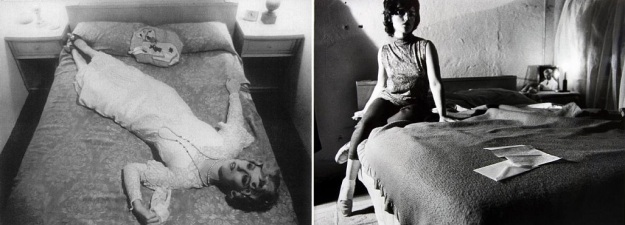
“Society Portraits” (2008) – Huge color images show the struggle of status-obsessed culture, women with mounds of makeup and cosmetic alteration clinging to youth. In these Sherman makes her characters vulnerable behind all the costuming and make-up, commenting on society’s perception and intense focus on beauty.
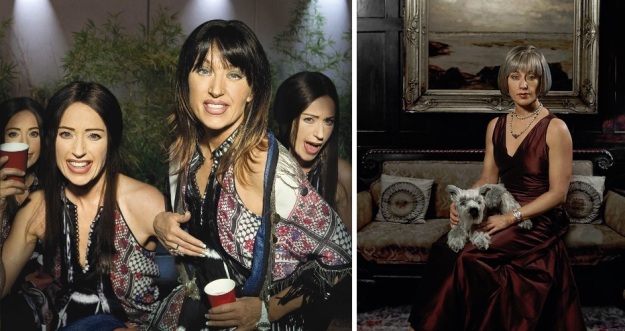
“History Portraits” (1988–90) – A modern representation in Art History, highlighting the relationship between the painters and their model, with allusions to Ingres, Caravaggio, Raphael and other Old Masters; all who were men, all whose models were women. Sherman borrows from several periods of art, renaissance, the baroque and neoclassical. The artist uses heavy makeup and obvious prosthetics to transform into the characters of the era.

“Fashion” (1983–84, 1993–94, 2007–08) – This is a series of works that challenge and comment on ideas of beauty and grace within the fashion industry. Over the years, fashion has been an inspiration for Sherman and she has been commissioned by many well known fashion designers and magazines.
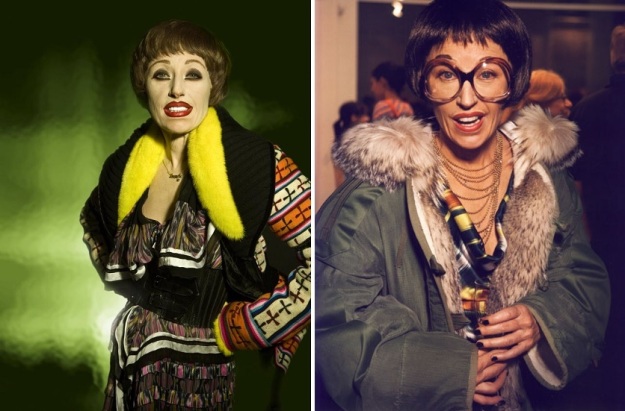
“Centerfolds” (1981)– A series of twelve images that refer to the printed page and the cinema in two by four foot horizontal photographs where the female subjects are placed on differing emotional stages; scared, lonely, melancholic, bored, heartbroken. Here Sherman is exploring the alienation of women. A great work in this section, “Untitled #96, 1981”, in which Sherman lies on a linoleum floor in a sweater and skirt looking absently away from the viewer, a thirty-something single clutching a personals ad torn from a newspaper, sold at a Christie’s New York auction for $3.89 million in 2011, the most expensive photograph ever sold at the time (a record which has since been beaten).
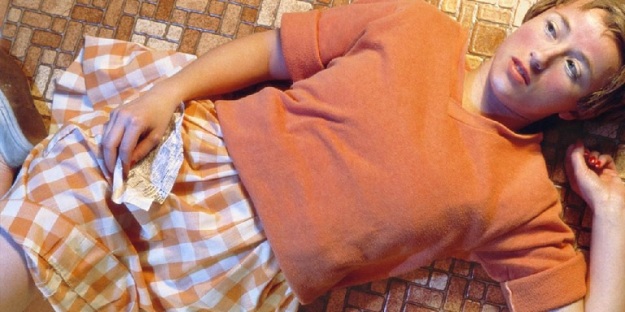
“Clowns” (2002–04)- All of the subjects in this series are dressed in bright colors and carnivalesque makeup, a jovial and even comical surface layer for the characters. Sherman is using the clowns because, underneath the vibrant bursts of color and wide tooth smiles, is an underlying sadness. As the artist said in an interview last year, “clowns are sad, but they’re also psychotically, hysterically happy.” Sherman is using the persona of the clown to have a conversation – people can paint themselves to look happy, even if they are sad underneath. She goes to the extreme to show the vast emotional possibilities behind a painted smile.
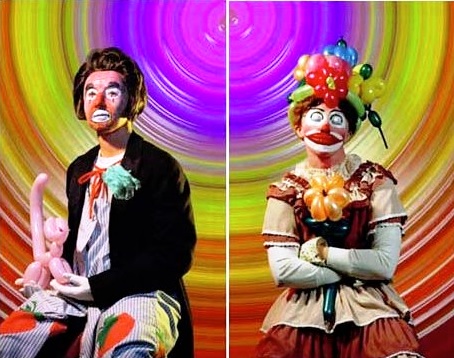
“Sex Pictures” (1992)– After the popular success of her “History Portraits” show, Sherman felt she had to challenge herself to do something difficult, something that would make it “…hard for the audience to just, you know, applaud and throw their hands up in the air…” she said in a 2010 interview when asked about her jarring new series. Reenacting pornographic scenes with prosthetics and mannequin parts purchased from medical-supply catalogues, this section of the exhibition should have a warning sign to caution parents from bringing their children in. The images are graphic, sexual, and though there is no actual nudity since everything is fake, the photographs are disturbing. In this same section are images from the 1980s and 90s when Sherman was interested in grotesque and macabre narratives, investigating ideas of censorship and, as intended, making it hard for the audience to simply applaud.
*Sorry, no example of these, the content is too graphic for this blog
“Headshots” (2000)- In her headshots, Sherman invented characters who have fallen victim to the cycle of desire, ambition and failure of Hollywood. These images depict would-be stars, failed actors and has-been performers posing for headshots for agents and agencies. With a little tongue-in-cheek, Sherman first exhibited this series in Beverly Hills, California.

“Fairy Tales & Mythology” (1985)- “In horror stories or fairy tales, the fascination with the morbid is also, at least for me, a way to prepare for the unthinkable…That’s why it’s very important for me to show the artificiality of it all, because the horrors of the world are unwatchable and they’re too profound. It’s much easier to absorb – to be entertained by it, but also to let it affect you psychologically – if it’s done in a fake, humorous, artificial way.”
-Cindy Sherman
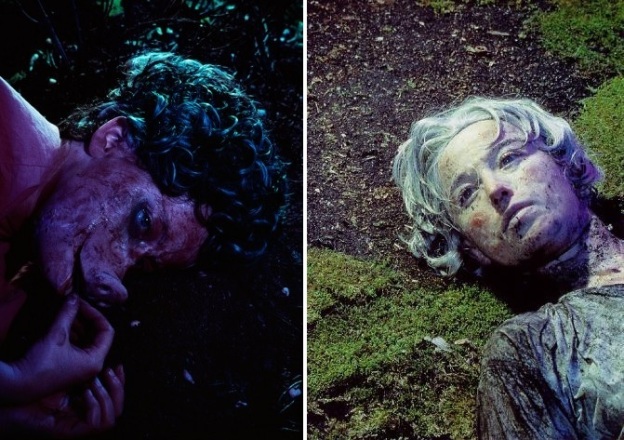
As a working artist, Sherman continues to use her own disguised body as the subject in her works. Her photographs are not self-portraits and have nothing to do with the artist herself. All of her works are untitled and simply given a number, i.e. “Untitled #109” or “Untitled #434”, which further distances Sherman from the images; she wants the viewer to draw their own conclusions and has refused to title any of her works. Throughout her career, from the film stills to the society portraits, her work has been an investigation of identity – what it is, how we use it, how it changes – and how photography is the means in which identity is manufactured in popular culture and, now, social media.
Cindy Sherman is the recipient of the MacArthur Award and Hasselblad Award for Photography. She currently lives and works in New York City. Her newer works are embracing the possibilities available through digital photography and photo manipulation software.
While you are at the DMA, be sure to catch the other two special exhibitions currently showing, “Loren Mozley: Structural Integrity,” runs from February 17–June 30, 2013 and “Chagall: Beyond Color,” runs from February 17–May 26, 2013. A purchase of one $16 dollar ticket will get you access to all three special exhibitions. If you are a member, the shows are free.
All images used for purpose of this article and are not intended for reproduction, copyright is reserved for the artist

Great article, love the prints!
Awesome article about an interesting person I’d never heard of. I learned a lot.
Very informative and interesting! I love hearing how artists come to be. Would love to attend the museum and walk through and view her works! Great article.